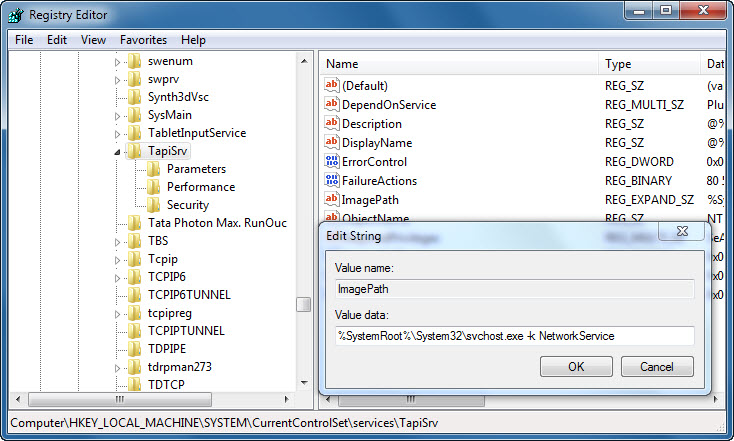

#DCOM STARTUP TIME REGISTRY VALUE WINDOWS#
If the administrator is denied permission to access DCOM applications due to the changes made to DCOM in the Windows operating system, the administrator can use the DCOM: Machine Access Restrictions in Security Descriptor Definition Language (SDDL) syntax policy setting to manage DCOM access to the computer. Use care in configuring the list of users and groups. This precedence means that previously existing registry settings are no longer effective, and if you make changes to the existing settings, device access permissions for users aren't changed. The Remote Procedure Call (RPC) service checks the new registry keys in the Policies section for the computer restrictions, and these registry entries take precedence over the existing registry keys under OLE. The registry settings that are created as a result of enabling the DCOM: Machine Access Restrictions in Security Descriptor Definition Language (SDDL) syntax policy setting take precedence over the previous registry settings when this policy setting was configured. Changes to this policy become effective without a computer restart when they're saved locally or distributed through Group Policy. This section describes features and tools that are available to help you manage this policy. Server type or GPOĬlient Computer Effective Default Settings Default values are also listed on the policy’s property page.

The following table lists the actual and effective default values for this policy. The Blank value is set by using the ACL editor to empty the list, and then pressing OK.Ĭomputer Configuration\Windows Settings\Security Settings\Local Policies\Security Options Default values This value deletes the policy and then sets it as Not defined. This value represents how the local security policy deletes the policy enforcement key. Users and groups can be given explicit Allow or Deny privileges for local access and remote access. When you specify the users or groups that are to be given permissions, the security descriptor field is populated with the Security Descriptor Definition Language representation of those groups and privileges. User-defined input of the SDDL representation of the groups and privileges The default ACL settings vary, depending on the version of Windows you're running. We recommend that you use the built-in user interface to specify the ACL contents that you want to apply with this setting. You can type the security descriptor in SDDL, or you can grant or deny Local Access and Remote Access permissions to users and groups. This policy setting allows you to specify an ACL in two different ways. These ACLs also provide a centralized location for an administrator to set a general authorization policy that applies to all COM-based servers on the device. They provide a minimum security standard that must be passed, regardless of the settings of the specific server. These device-wide ACLs provide a way to override weak security settings that are specified by an application through the CoInitializeSecurity function or application-specific security settings. This policy setting controls access permissions to cover call rights. (This check is in addition to any access check that is run against the server-specific ACLs.) In effect, it provides a minimum authorization standard that must be passed to access any COM-based server. If the access check fails, the call, activation, or launch request is denied.

A simple way to think about these access controls is as an extra access check that is performed against a device-wide access control list (ACL) on each call, activation, or launch of any COM-based server. These controls restrict call, activation, or launch requests on the device. This policy setting allows you to define other computer-wide controls that govern access to all Distributed Component Object Model (DCOM)–based applications on a device. Describes the best practices, location, values, and security considerations for the DCOM: Machine Access Restrictions in Security Descriptor Definition Language (SDDL) syntax policy setting.


 0 kommentar(er)
0 kommentar(er)
